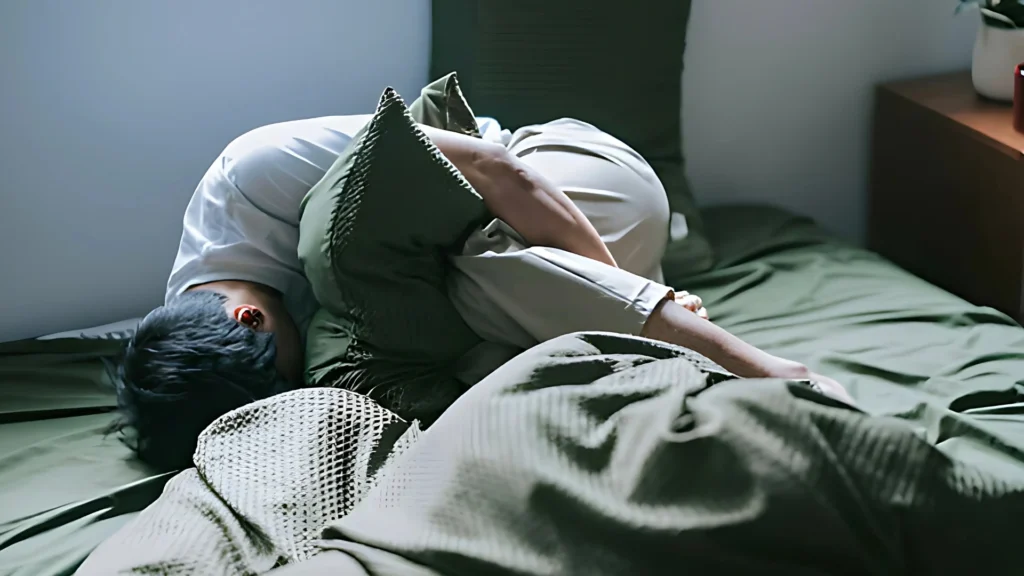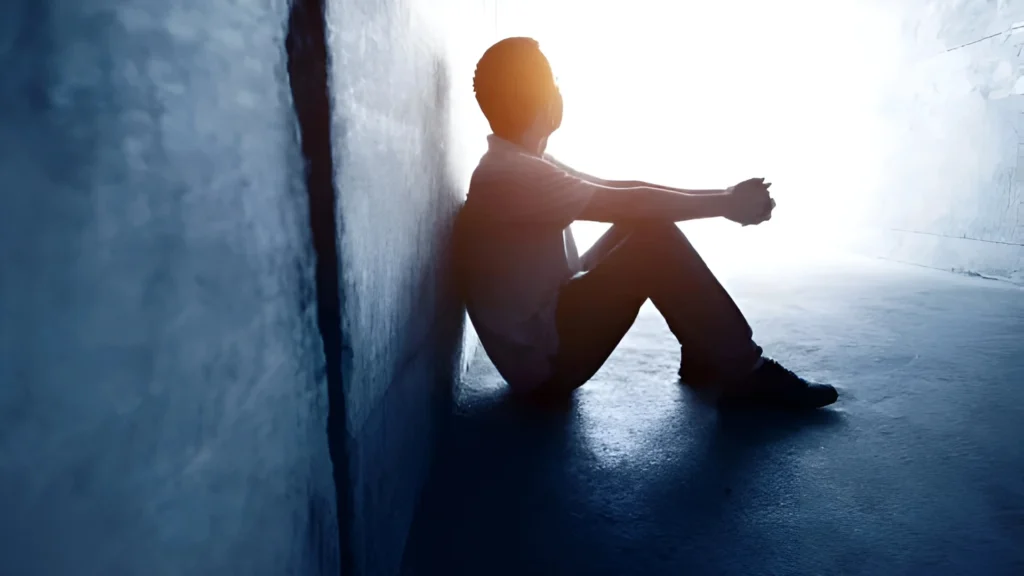Seasonal Affective Disorder (SAD) is a mental health condition that affects millions of people, particularly during the darker months of the year. In the UK, around 3% of the population experiences full-blown SAD, while up to 20% face milder symptoms often dismissed as the “winter blues.” Despite these figures, the condition’s impact on men is rarely discussed. Many men grapple with feelings of extreme fatigue, lack of focus, and hopelessness, yet these symptoms are often hidden or misinterpreted as stress or simply “toughing out” the winter.
SAD typically begins to show up between the ages of 18 and 30 and is thought to be caused by reduced exposure to sunlight during the winter months. This disrupts the body’s internal clock and lowers serotonin levels, which can significantly affect mood and energy. In the UK, with its short days and persistent grey skies, these challenges are even more pronounced. Thankfully, support is available. Whether it’s light therapy, outdoor activities, or finding community in groups like Me’s Prosperity Club, men don’t have to face this condition alone. With the right awareness and resources, brighter days are possible—even in the depths of winter.
The Hidden Face of Seasonal Depression in Men
Let’s dive into something that doesn’t get enough attention – the way seasonal affective disorder (SAD) shows up differently in men. Women get diagnosed more often, but us men face unique challenges that often slip under the radar.
Why men experience SAD differently
The typical description of SAD doesn’t match what many of us go through. Research shows all but one of these SAD cases are diagnosed in women. In spite of that, these numbers might not paint the complete picture. Many of us hide our symptoms behind society’s expectations of what “strong men” should be.
Our battle with seasonal depression often comes out as irritability and sudden anger instead of obvious sadness. We bury ourselves in work or turn to alcohol as ways to cope. The pressure to be “the breadwinner” and stay “in control” makes it hard for us to open up about our feelings.

Common misconceptions about male SAD
Here are some myths about seasonal affective disorder in men that need busting:
- “It’s just the winter blues” – SAD is a real, clinically recognised form of depression with clear symptoms
- “Real men don’t get affected by seasons” – The seasons change our brain chemistry, whatever our gender
- “You can just snap out of it” – This needs proper treatment as it’s a serious condition
- “If you’re still working, you’re fine” – Many of us keep functioning while fighting internal battles
The role of testosterone in seasonal mood changes
The sort of thing I love about our biology is how testosterone levels shift with the seasons. Studies show that while testosterone stays within normal ranges year-round, the levels drop noticeably during cold months. These seasonal changes affect our well-being in several ways.
The effects run deeper than most realise. Lower testosterone levels in winter can change our:
- Sexual thoughts and activity levels
- Overall energy and motivation
- Stress response capabilities
Cold temperatures act like a stress trigger that can suppress testosterone production. These hormonal shifts aren’t just about mood – they’re part of how our bodies naturally respond to seasonal changes.
Note that having these symptoms doesn’t make us less capable or strong. The first step to taking charge of our mental health is understanding how our bodies react to seasonal changes.
Recognising Male-Specific SAD Symptoms
My years of studying seasonal affective disorder have revealed something fascinating – men’s symptoms can be quite surprising. Our bodies react uniquely when seasonal depression strikes.
Physical symptoms men tend to ignore
Do you feel physically unwell during darker months? Our bodies signal seasonal depression through physical symptoms that we usually brush off. Here’s what we typically experience:
- Chest tightness and racing heart
- Digestive issues including gas and constipation
- Headaches and unexplained muscle pain
- Sexual problems, including reduced desire
- Unmatched weight changes
Behavioural changes that signal SAD in men
Our behaviour changes noticeably when seasonal depression takes hold. Many of us work obsessively without breaks, which looks productive but masks our struggles. We also start pulling away from social situations and family responsibilities.
Research shows that men’s depression networks work differently from women’s. We focus more on physical symptoms rather than emotional ones, making it harder for others to spot our struggles.
How men’s symptoms differ from women’s
Men and women experience seasonal affective disorder quite differently. Women report SAD at a rate 3.6 times higher than men in unipolar cases. This statistic might not paint the full picture.
Research shows that men don’t report symptoms as often, likely because we:
- Focus on physical rather than emotional symptoms
- Keep quiet about our struggles
- Channel our depression into work or sports activities
Our eating patterns mark another key difference. Women might experience increased appetite and specific food cravings, while men show different patterns of appetite changes.
We also process these symptoms differently. Research reveals that our symptom connections and depression networks have unique patterns. The core symptoms might be similar, but they affect our daily lives differently compared to women.
These male-specific symptoms often hide behind what looks like typical “male behaviour.” Recognising these signs as potential indicators of seasonal affective disorder gives us better chances of getting the help we need.

Breaking the Silence: Why Men Don’t Seek Help
My experience with seasonal affective disorder, both personal and academic, helps me understand why speaking up feels like climbing Mount Everest. The barriers we face extend beyond our minds and deep into society’s expectations and our self-image.
Cultural barriers and masculine identity
Traditional masculinity norms weave a complex web of expectations that often leave us trapped in silence. Studies show these norms substantially affect our willingness to seek help – men make up only 20% of mental health clients. Society teaches us to be tough, rational, and self-reliant – qualities that seem to clash with asking for help.
Many of us grapple with what experts call “John Henryism” – the expectation to push through stress without complaint. This pressure intensifies for those of us in traditionally masculine professions and affects how we acknowledge seasonal depression.
Workplace stigma and career concerns
The professional environment creates unique challenges. A global study reveals 30% of us would hesitate to discuss mental health at work because we fear career consequences. The numbers become more troubling – 46% worry about colleagues speaking negatively behind their backs.
Common workplace fears include:
- Missing promotions
- Losing colleague respect
- Questions about leadership abilities
- Appearing unreliable
Fear of appearing weak or vulnerable
Our deepest barrier often exists within. Research shows men who strongly identify with traditional masculine norms are half as likely to seek preventive healthcare. Many of us internalise these struggles and view them as personal failures rather than legitimate health concerns.
Our hesitation comes from:
- Rejection fear from male peers
- Judgement about competence
- Appearing dependent on others
- Loss of identity
These fears reflect real societal pressures and daily expectations. Research offers hope – finding trusted communities and understanding healthcare providers makes us more likely to open up and seek needed support.
My firsthand experience shows how silence deepens our seasonal affective disorder struggle. Understanding these barriers marks the first step toward breaking them down. This knowledge helps us build bridges toward better support systems and more effective treatment approaches.
The Impact on Work and Relationships
Seasonal affective disorder’s effects reach way beyond the reach and influence of our personal well-being. These effects create waves that crash into our professional lives and closest relationships. I’ve seen how this condition can quietly erode both our careers and personal connections.
Performance issues at work
Our work life shows subtle changes at first. UK statistics reveal that more than 190,000 men report stress, depression, or anxiety caused or made worse by work each year. Men are twice as likely to face mental health problems from their jobs compared to issues outside work.
At work, we might notice:
- Tasks become harder to focus on and complete in time
- More time spent at the office to escape
- More sick days and unexplained absences
- Work quality and motivation drop
Strain on personal relationships
Personal relationships take the hardest hit from seasonal affective disorder. Living with someone who has SAD creates unique challenges for both partners. The strain shows up through:
- Partners grow distant and stop communicating
- Physical intimacy decreases
- Conflicts and irritability increase
- Partners misunderstand the condition’s nature
These challenges can create a cycle of disconnection without doubt. Our partners might feel helpless as they watch us struggle, especially when we can’t express our feelings clearly.

Social withdrawal patterns in men
Men show distinct patterns of social withdrawal when dealing with seasonal affective disorder. Research shows this withdrawal appears through:
- Team lunches and after-work activities get avoided
- Lunch breaks become solo affairs
- Screen time and gaming increase significantly
- Social invitations get turned down
Remote work arrangements have made these patterns more obvious, sometimes leading to deeper isolation. Men from lower-income backgrounds or minority ethnic groups face an even tougher situation with extra stress from money worries and social isolation.
Men often hide these struggles behind longer work hours or solo activities. Research shows we tend to distract ourselves with endless TV shows or throw ourselves into work instead of asking for help.
Money worries add another layer to this complex situation. The stress of providing for family mixed with workplace pressure creates perfect conditions for worse SAD symptoms. This combination affects both our work performance and relationships at home, creating a cycle that’s hard to break without support and understanding.
Treatment Options Tailored for Men
Need some real solutions for seasonal affective disorder? I’ve found that treating SAD works best with a customised approach because we men react differently to various treatments. Let’s look at some options that actually work for us.
Light therapy and vitamin D supplementation
My research and personal experience show that light therapy stands out as one of the best treatments. Studies prove that you can see real improvement by sitting near a light box with 10,000 lux of cool-white fluorescent light for 30-45 minutes each morning.
Here’s what you should know about light therapy:
| Time of Day | Duration | Distance | Light Intensity |
| First hour after waking | 20-30 minutes | 16-24 inches | 10,000 lux |
Let’s talk about vitamin D supplements. Research shows vitamin D levels drop during winter months, so healthcare providers often suggest taking supplements. Studies point to positive results with high doses (≥100 μg D3 daily) for 1-3 months.
Exercise-based interventions
Exercise has proven to be a powerful weapon against seasonal depression. Research shows regular exercise can fight depression symptoms just as well as some medications. The things below have helped me the most:
- Moderate aerobic activities (150 minutes weekly)
- Resistance training
- Team sports
- Outdoor activities (when possible)
You’ll start noticing mental health benefits after a few weeks of regular exercise. Success comes from picking activities you truly enjoy, which helps you stick with them long-term.

Male-friendly therapy approaches
My experience shows that traditional face-to-face therapy doesn’t always appeal to us men. The good news is that male-specific therapeutic approaches are gaining ground. Research indicates men prefer ‘shoulder-to-shoulder’ communication instead of direct face-to-face interactions.
These alternative therapy options work well:
- Action-oriented counselling that focuses on problem-solving
- Group therapy with other men (more effective than mixed groups)
- Community-based support through activities like Men’s Sheds
These approaches work because they match our natural way of processing emotions and getting support. Studies show men open up more while doing activities rather than sitting in traditional therapy sessions.
Combining treatments often leads to better results. Light therapy in the morning followed by exercise has shown a lot of promise. The key is finding the right mix that fits your lifestyle and priorities.
Note that getting treatment shows strength – it means you’re taking charge of your health. Just like fixing a physical injury, dealing with seasonal affective disorder needs the same practical mindset.
Creating a Man-Specific Support System
A strong support system might be the most significant step to manage seasonal affective disorder. My experience taught me that the right people in our corner make all the difference.
Building a professional support network
Our workplace relationships are vital to manage seasonal affective disorder. Research shows that male support workers in mental health spaces help break down barriers. This makes it easier for other men to get involved with support services.
My approach centres on creating what I call a “professional circle of trust.” This includes:
- Identifying colleagues who understand mental health challenges
- Building relationships with healthcare providers who specialise in men’s mental health
- Connecting with mentors who’ve guided others through similar challenges
The key lies in finding professionals who know that asking for help isn’t weakness – it’s a strategy for success. Studies show that having male support workers in front-line practise improves engagement rates among men asking for help.
Involving partners and family members
Our loved ones want to help but might not know how. Research shows that men’s peer support groups give families spaces to learn how to support their loved ones. Here’s what works best:
| Support Type | Benefits | Implementation |
| Partner Support | Creates daily accountability | Share treatment plans and triggers |
| Family Education | Builds understanding | Include in therapy sessions |
| Shared Activities | Strengthens bonds | Plan outdoor activities together |
The goal is to create an environment where nobody faces mental health challenges alone. This approach helps men stick to their treatment routines.
Finding male-oriented support groups
Connecting with other men who understand our experience can change everything. Studies show that men’s peer support groups create spaces where participants talk openly without judgement. These groups provide unique benefits that traditional therapy might miss.
Male-specific support groups show impressive results. Research indicates that men who join these groups report:
- More confidence discussing mental health
- Better skills to express emotions
- Deeper sense of community and belonging
- Greater understanding of their mental health
Organisations like Men’s Prosperity Club offer peer support services designed specifically for men. These groups are led by people with lived experience, providing empathy alongside practical guidance. Most men feel more at ease opening up while engaged in activities, which is why our Walk and Talk sessions work so well. Research shows that shared activities like walking, sports, or hobbies create natural opportunities for connection, helping men feel more comfortable expressing themselves.
At our Walk and Talk events, participants often share how the experience helps them reflect on their own journeys while gaining fresh perspectives from others. Honest conversations during these walks not only foster connection but also encourage personal growth. One of our participants described it as more than just a group, saying it was a space for real understanding and support.
It’s not necessary to start building a support network all at once. Taking small steps, like joining a walking group, can gradually help you develop meaningful connections. Whether it’s for companionship, shared experiences, or mental wellbeing, our Walk and Talk events provide an approachable way to connect with others.
Final Thoughts
Living with seasonal affective disorder as a man shouldn’t mean suffering in silence. My research and personal experience show how this condition affects men differently than women – from our distinct symptoms to the ways we handle and deal with seasonal changes.
The barriers we face are real. Social expectations, workplace pressures, and our reluctance to show vulnerability create obstacles to getting help. These challenges aren’t impossible to overcome. Light therapy and male-oriented support groups are practical solutions that match our needs and priorities.
Taking active steps to manage SAD requires professional help, lifestyle changes, and solid support networks. Men who actively work on their seasonal depression see major improvements in their work and personal lives.
Asking for help is a sign of strength, not weakness, and I firmly believe that. It’s a smart choice to take charge of your well-being. You can take action for your mental health today. Join Men’s Prosperity Club’s Walk and Talk Events to meet others, or check our Charity Posting Page to learn about community resources like Samaritans and ways to get involved.
Better mental health starts when you recognise SAD and understand how it affects us as men. You have options whether you’re dealing with mild winter blues or severe symptoms. Your journey to better mental health starts with one step – and you won’t have to walk it alone.




